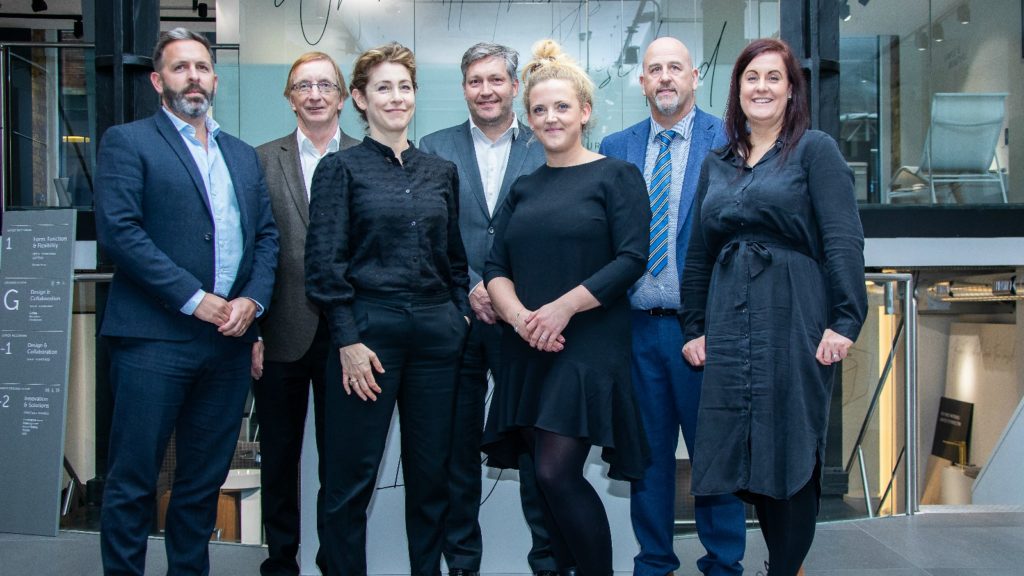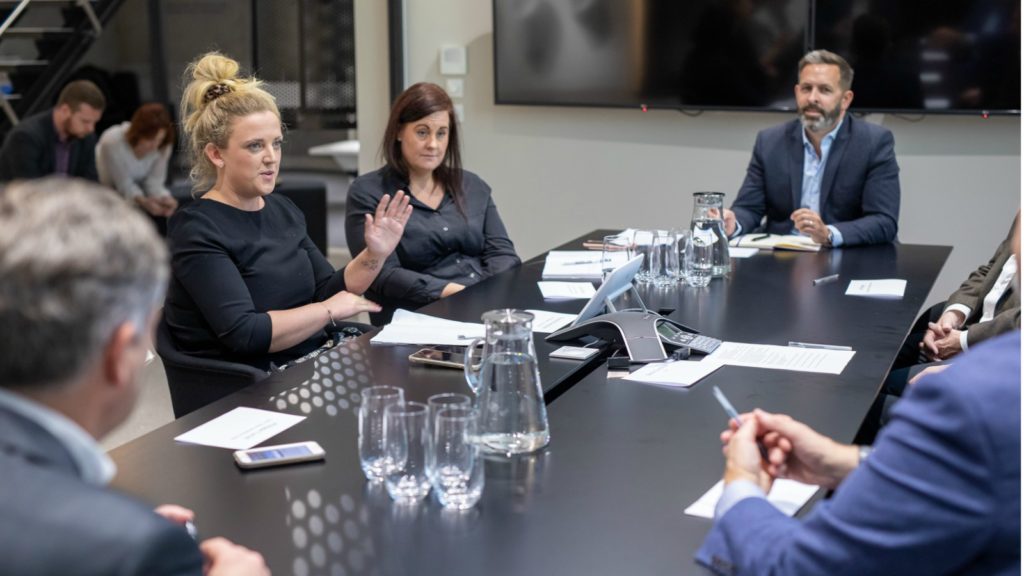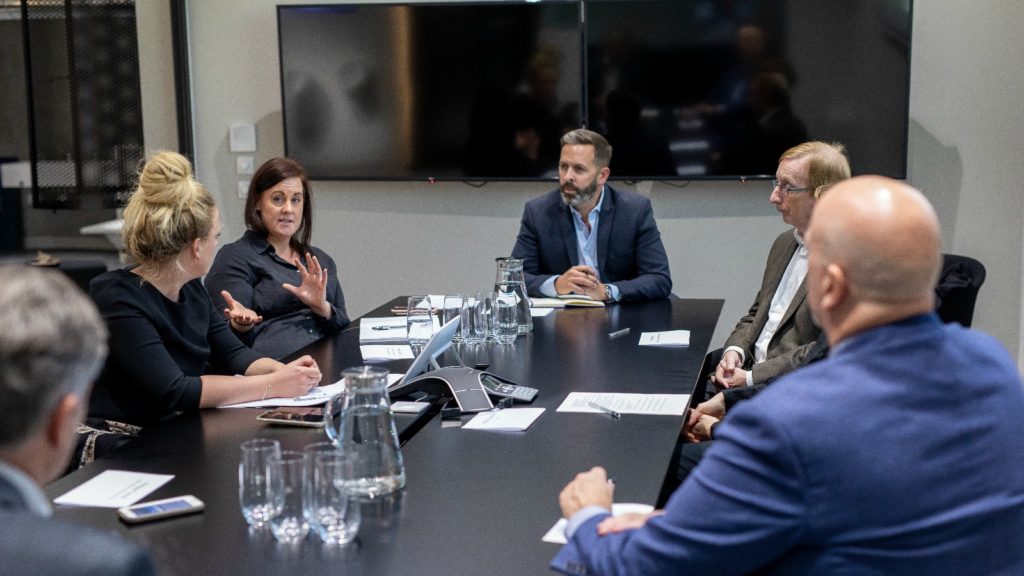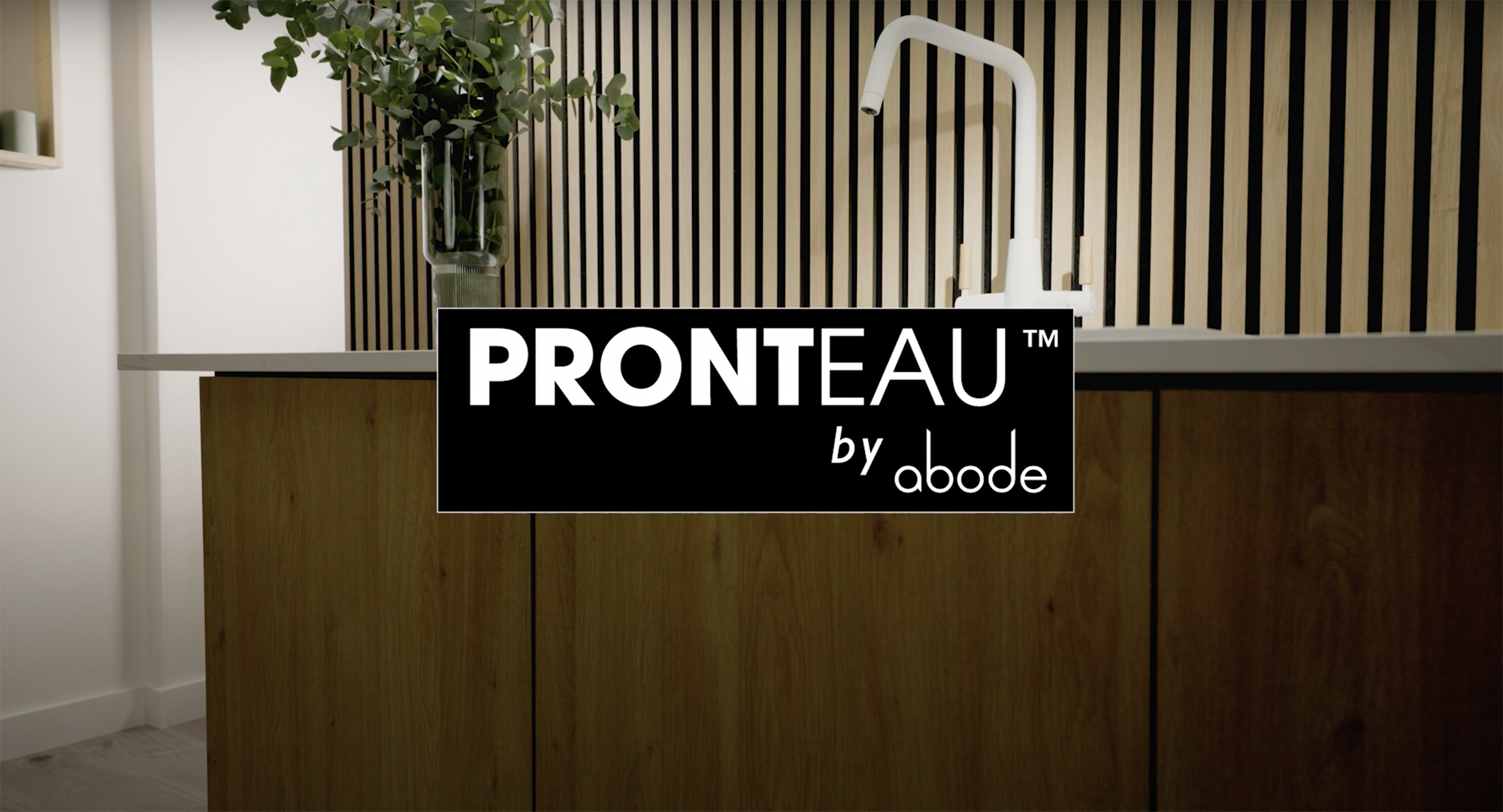Ideal Standard held a roundtable to discover retailer pain points and how suppliers can best address them. Editor of Kitchens & Bathrooms News Philippa Turrell reports on the event

(Left to right): Channel director of Sottini UK Adam Evans, owner of Bodywash Jim Healey, interior journalist and chair Becky Sunshine, managing director of Ideal Standard UK Stephen Ewer, brand manager of Just Add Water Charlotte Schofield, retail manager of Sottini UK Gary Major and head of product and marketing specification Leanne Martin
Bathroom manufacturer Ideal Standard hosted a roundtable with retailers at its Design and Specification Centre in London to discuss key issues affecting their showroom businesses.
Forming part of Ideal Standard’s plans to meet the changing demands of retailers and their customers, it highlighted the continuing challenge from e-commerce, supply issues and need for improved communication throughout the supply chain.
Sponsored Video
Challenging internet sales
Although attendees agreed the internet plays an important role for customers to research their bathroom purchase, the challenge from discounted online sales remains a challenge for showrooms.

Owner of Bodywash Jim Healey says ask any bathroom retailer and they will say the internet is the enemy, with challenge from discounted sales on e-commerce affecting all levels of the market
Owner of Bodywash Jim Healey said: “The internet is an enemy. All retailers want to do is try and make a margin and sell a product that they are confident in and it is a bit galling when you spend hours with a customer and suddenly they are back on the phone saying ‘I can get it all cheaper online’.
“We disguise the range names. We want to sell the brand but we don’t want to give them extra information to make their journey easier on internet.”
He continued, stating his team sell the USPs for dealing with his company, adding: “obviously we are still trading and we are doing steady business, but we lose more than we gain.”
And brand manager of Just Add Water Charlotte Schofield agreed: “It is something that we come up against but we just have to hope the customer wants to deal with us, so we have to sell ourselves. There are some websites that do 45% off as a discount and we can’t compete. I do just turn the business away.”
To negate these challenges, managing director of Ideal Standard UK Stephen Ewer pointed to channel exclusivity as a solution.

Managing director of Ideal Standard UK Stephen Ewer explains how its selective distribution policy will help counter the challenge from free riders
He stated if a product isn’t available online and a bricks and mortar showroom is given a defined geographic area, then retailers won’t face the pressure on margin.
“That’s what we are committed to putting in place with Sottini. By limiting the amount of partners, defining the geographic area and putting in place a selective distribution system, it means if the product is shown online, it has to present the brand in the same quality as you show it in a showroom.”
He explained: “It’s so we don’t have free riders who take the brand, buy it through somewhere else, and sell it online.”
Having been in business for more than 30 years, Jim Healey said many bathroom manufacturers have tried a similar route “but it’s never been held up. It would be lovely if it works and we got that bit of protection.
“I’m not sure how because everybody claims they can’t do it, legally, and that’s why I’m a little bit sceptical.”
Stephen Ewer answered: “The ‘aura of the brand’ principle is if a manufacturer and retailer have put a lot of investment into creating a customer experience and someone then discounts it by 50-60% to attract people to their site, to sell them something else, then you are able to have a mechanism to take those guys down and that is increasingly being supported in case law. I’m not going to challenge you’ve not seen that work effectively but that is certainly developing and maturing.”
Long-term view
But if retail becomes challenging what happens if bricks and mortar retailers break ranks and start discounting online?

Retail manager of Sottini Gary Major says the company will choose retailers which share the same ethics of the company so they don’t break from rank and start discounting
Channel director of Sottini UK Adam Evans countered: “It’s about choosing responsible retailers who have the same attitude as us.”
And retail manager for Sottini UK Gary Major agreed: “There are enough showrooms out there who share the same ethics as we do. If we can avoid that confrontation, that’s our best option to start with.”
Equally, if manufacturers feel under pressure, what is to stop them broadening their once selective policy?
Stephen Ewer said: “All we can do as a manufacturer is say with Sottini we are not going to open it up. Sottini is positioned to be channel exclusive to retail, as well as work with selective high-end developers, which is absolutely complementary to retail.”
And with the brand being UK-focused, Ewer says it also closes doors to the possibility of European superstores selling discounted product into the UK.
Stock out
But the growing pressure points for retailers are not solely concentrated on the internet; once products are sold the difficulty can be fulfilling the order.

Brand manager of Just Add Water Charlotte Schofield says she has to pay compensation to her clients if a product is not delivered on time and her customer has trades waiting on site
“There’s nothing more frustrating than you’ve sold the product and you can’t get it because everybody is destocking or lowering stock levels”, said Jim Healey.
Having worked in bathroom retail Gary Major noted his frustration, adding its latest price list highlights stock items and those on a longer lead time.
However, Charlotte Schofield pointed out manufacturer weren’t adhering to the lead times, commenting: “The problem is you can get a lead time for four weeks but then it comes in eight. Try telling that to a customer who has paid us thousands of pounds. I don’t mind lead times, it’s just when they are broken. That frustrates me.” She continued saying her business loses money when a product is a no-show.
Adam Evans points out Sottini has built in a number of months’ range of stock based on forecasting retail sales and it has been ringfenced for retail partners. And he says the brand now has a person looking after orders from start to finish: “It’s very important to keep the communication lines open.” And according to Stephen Ewer Sottini has delivered core product at 98% OTIF (on time in full).
The discussion highlighted relationships are key between manufacturers and retailers for commercial success. “I have really good relationships with all the suppliers I use. So it makes me want to buy their product”, says Charlotte Schofield.
Brand messaging
And to aid communication to consumers, the messaging and service behind brands remains vital to retailers.
Charlotte Schofield said “All of our customers want to buy a brand. They know the names and come in and ask for the brand.”
While Jim Healey points out customers will buy products based on his company’s recommendations, “We are the brand and if we say it’s good, it’s good enough for them. It’s the confidence you are giving the end user.”
So both parties must work at keeping the equity in a brand, as head of product and marketing specification at Ideal Standard Leanne Martin pointed out “because if you remove that you are just a product. How we take the brand to market with the right image and creating the right tone and giving the right tools to customers to present their face of their retail business is what helps differentiate that brand.”
Showroom sales
Showrooms remain key to selling branded bathrooms, as Gary Major commented: “I read an article about buyers from 25 up to 35, the heaviest users of the internet, but when it comes to making an expensive purchase 44% would rather buy in a bricks and mortar retail store, where they can feel and see the quality.”

Channel director of Sottini UK adam Evans listens to concerns about supply issues in the bathroom industry and says the company has ringfenced product for retailers
Retailers reported their showrooms showcased brands in lifestyle vignettes and practical displays and Leanne Martin stated Sottini also offers a design service: “The displays have a number of jobs to do. They’ve got to sell your showroom. They have got to inspire that customer to make a purchase and they’ve got to represent the brand. We can work with the showroom.”
But do retailers like the help from manufacturers? “When you don’t know the range it’s useful and I particularly like manufacturers to put products on that they know are sellers”, says Jim Healey and welcomed the fitting team.
Both retailers also used technology to create an in-store experience with Bodywash using CAD drawing presentations and Just Add Water installing the Virtual World 4D cinema theatre.
In fact, Adam Evans said “The good showrooms, I find, have hot spots – interesting areas where you can hold people’s attention with design ideas or ‘wow’ displays.” And Gary Major agreed retailers performing well in the market had well-appointed showrooms, adding those who are staid are “far more vulnerable to customers migrating to the internet” because of the lack of instore experience.
Importance of colour
Retail showrooms are a hotbed for bathroom trends, with colour injected into sanitaryware and brassware.

Head of product and marketing specification at Ideal Standard UK Leanne Martin said retailers should challenge neutral environments by injecting colour
However, Jim Healey comments: “Coloured sanitaryware doesn’t sell to my end of the market but that’s where furniture comes in. Everybody was jumping on black taps but there was no volume in sales.”
Whereas Charlotte Schofield says coloured brassware is successful in her business: “A lot of my customers are interior designers with projects in London and always have a coloured brassware.” However, she adds: “You do get the odd order for coloured ceramic but I do explain to the customer you may get bored with it in a couple of years.”
Warning that neutral interiors make a landscape people don’t want to change regularly, Leanne Martin says designers shouldn’t avoid colours, as “Consumers are far more aware of interior trends than they have ever been. The internet exposes all of us to trends and design. Keeping on top of those trends and the ability to offer that to your customer is really important.”
Sustainable sales
With increasing noise in the media about ecological issues, is this now also playing a greater role for retailers?
Charlotte Schofield said more people are asking questions about water use and she feels a responsibility as a retailer to push the eco-message.
But Jim Healey said it’s not a conversation held in his showroom and his duty is to sell what the customer wants: “We just don’t have that conversation. I have no ambitions to save the planet and I don’t apologise about that. If consumers were to raise the subject then I will talk about it but it’s not happened in the last five years.”
And Gary Mason said he stood by Jim Healey’s point of view, as the message is “driven down from customer and then you deal with it as a retailer.” While the younger generation are making their views known on ecological issues, Stephen Ewer added: “It’s not yet agenda-leading.”
By sharing opinions and experiences, the roundtable highlighted the importance of collaboration between manufacturers and retailers to solve concerns and help move the industry forwards.

Sharing opinions and experiences, highlighting the importance of collaboration between manufacturers and retailers



